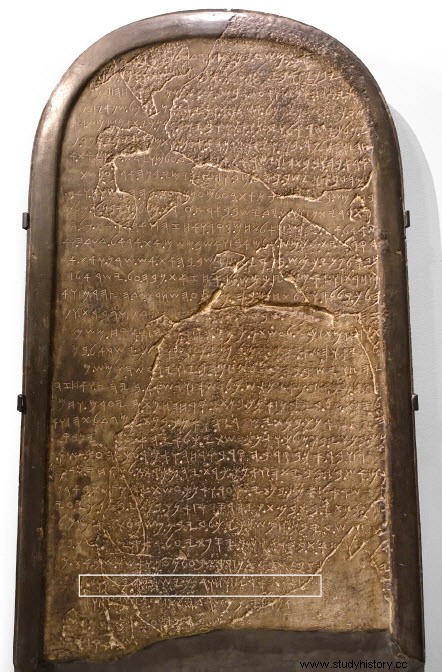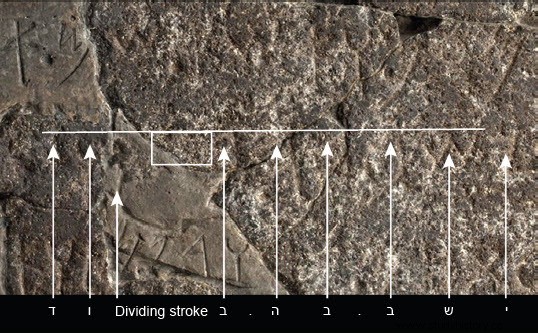A name on line 31 of the Mesha Stela, where until now the scholarly consensus was that it read House of David , may be that of the Moabite king Balak mentioned in Numbers 22-24.
This is what the researchers Israel Finkelstein, Nadav Na'aman and Thomas Römer affirm in an article published in the journal of the Institute of Archeology of Tel Aviv University.
The Mesa stela was found in the 19th century among the ruins of the city of Dibon in Moab (present-day Dhiban in Jordan) and is now housed in the Louvre Museum.

The inscription on it tells the story of the territorial expansion and building efforts of King Mesha of Moab, who is also mentioned in the Bible.
Shortly after the find, the stela cracked and some parts fell off, although a papier-mâché mold of the inscription had been made beforehand. The researchers studied high-resolution photographic copies of this cast, concluding that there are three consonants in the name mentioned in line 31, the first of which is the Hebrew letter beth (representing the sound b ).
Although the rest of the letters of the name are eroded, the authors are of the opinion that the most likely candidate is Balac . The king's seat mentioned in line 31 was at Horonaim, a place cited four times in the Bible in connection with Moabite territory south of the Arnon River. They therefore suggest that Balac may be a historical figure, as is Balaam, who before the discovery of the Deir Alla inscription was believed to have been invented .

Balaam was a prophet, whose story is told in Numbers 22-24, whom King Balak consults regarding the Israelites (who were about to conquer his territory), and who is known to have told him the donkey when they were on their way to Moab.
For a long time his historical existence was doubted, until in 1967 archaeologists found an inscription in Deir Alla, Jordan, where he is mentioned, although with the difference that it is said that he was a prophet of Ashtar and not of Yahweh as affirmed by the Bible.
The old reading of line 31 as House of David , accepted by scholars for more than two decades, is no longer an option, according to the study authors. With due caution we suggest the name of the Moabite king Balak, who according to the story of Balaam in Numbers 22-24, tried to bring down a divine curse on the people of Israel .

The story told on Mesha's stele was written at the time of that king, who lived in the 9th century BC, however, to give the story authenticity, the author must have integrated certain elements into the plot. older ones taken from reality, like the names of Balak and Balaam .
The stele was discovered in 1868, it is 124 centimeters high by 79 wide and 36 thick, and the inscription contains 34 lines written in the Paleo-Hebrew alphabet, constituting the largest recovered from ancient Moab. It was erected by King Mesha himself in 850 BC. as a reminder of his victories against the Kingdom of Israel.
